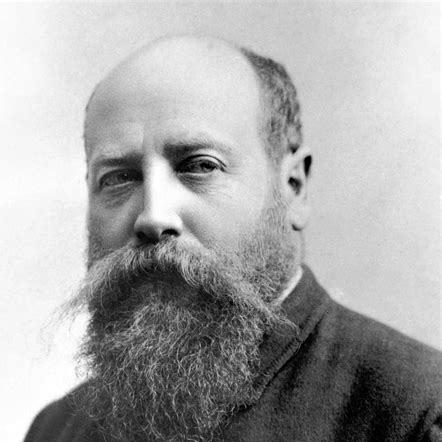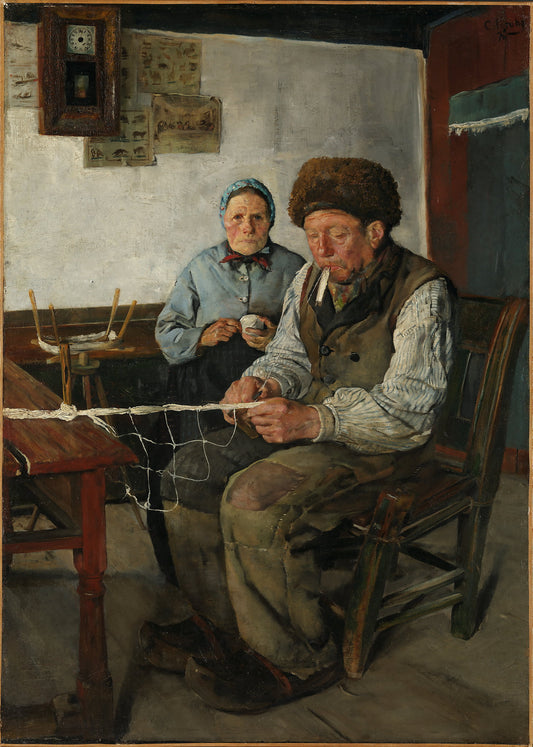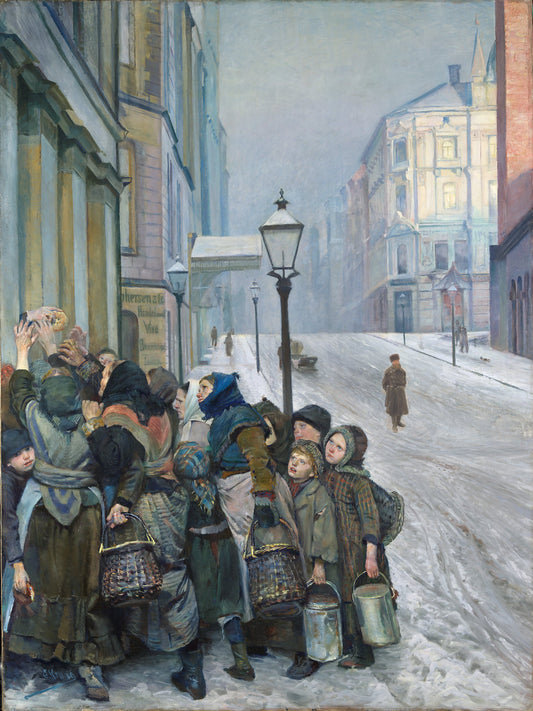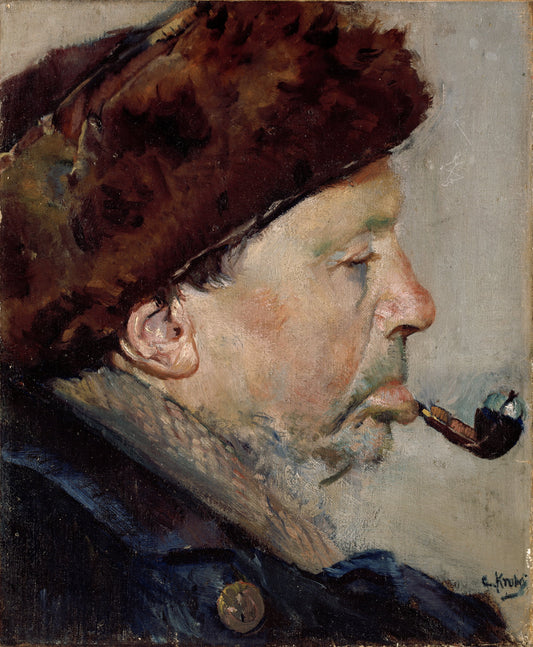Christian Krohg
The hair is braided
The hair is braided
Couldn't load pickup availability
High-quality reproductions from the National Museum's collection. Posters by DAIDDA are printed on Litho White Matt - 230 gram photo paper in premium quality. Artprints by DAIDDA provide outstanding colors, sharpness and durability in museum quality - printed on Moab Entrada Natural 300 gram cotton art paper. Printed on a matte surface with scratch-resistant pigment ink.
About the work:
Christian Krohg was a man with an eye for close relationships, and scenes from family life form a significant group of motifs. His many depictions of the Gaihede family in Skagen are particularly famous, and from the end of the 1880s it is his own family who are the models. In the family motifs, Krohg found general themes that cut across social groups, and which could therefore embrace a wide audience. Characteristic in his genre motifs is the focus on the small everyday moments of closeness and care: grandfather rocking the cradle, mother breastfeeding, mother reading to the children, or as in this motif: a mother braiding her little daughter's hair.
Inspired by, among other things, photography, Krohg strove to give the paintings a sense of the moment. Characteristic of his formal approach are the drastic cut-offs of the subject, the spontaneous poses of the figures and often unfamiliar placements. One of the original features of Håret flettes is that the situation is seen from behind, and we have to
therefore imagine the facial expressions of the two."It's the interception that matters," became a motto for Krohg. A significant effect of this compositional principle is that a unity is created between the pictorial space and the viewer's position.
The concentration on closeness and relationships in the choice of motifs is a counterweight to the fragmentary and momentary nature that Krohg's formal choice suggests. We are presented with something seemingly random, but the "Krohg-esque" moment often has an emotional element that provides a content with greater depth.
Text: Vibeke Waallan Hansen
About the original:
Date: Probably 1888
Other titles: Braiding her Hair (ENG)
Designation: Painting
Material and technique: Oil on canvas
Technique: Oil
Material: Canvas
Dimensions: H 56 cm x W 49 cm
Subject: Visual arts
Classification: 532 - Visual arts
Subject type: Portrait, Genre
Acquisition: Purchased 1914
Inventory no.: NG.M.01034
Part of exhibition: Art 3. Works from the collection 1814-1950, 2007 - 2011
The dance of life. The collection from antiquity to 1950, 2011 - 2019
The 1880s in Nordic painting, 1985 - 1986
Christian Krohg. Images that grip, 2012
The 1880s in Nordic painting, 1986
The 1880s in Nordic painting, 1986
The 1880s in Nordic painting, 1985
Pictures from family life, 2002
Registration level: Single object
Owner and collection: The National Museum of Art, Architecture and Design, Visual Art Collections
Photo: Lathion, Jacques
Shipping and returns
Shipping and returns
Shipping: We deliver to Scandinavia, the EU, the USA and several other countries. Please contact us if your country is not listed and we will try to arrange delivery.
Delivery time: 2-5 days within Norway, 7 days in Europe, 14 days globally.
Packaging: Our products are made to order and sent rolled in environmentally friendly packaging.
Customs Fees: International orders may be subject to customs fees, which are not included in shipping costs.
Return policy: You can return images within 14 days. See our returns page for more information.
Secure Payment: We never store your payment details. See our privacy policy for details.


See all works
-
Garnbinderen, Niels and Ane Gaihede, Skagen
Vendor:Christian KrohgRegular price From 150,00 NOKRegular priceUnit price per -
The struggle for existence
Vendor:Christian KrohgRegular price From 150,00 NOKRegular priceUnit price per -
Mother and child
Vendor:Christian KrohgRegular price From 150,00 NOKRegular priceUnit price per -
Niels Gaihede
Vendor:Christian KrohgRegular price From 150,00 NOKRegular priceUnit price per

Christian Krohg
Christian Krohg was committed to justice and freedom of expression, and was one of the great Norwegian realist painters. He painted the working class in Kristiania in the 19th century with compassion and a desire for change. He had to follow in his father's footsteps and become a lawyer, but wanted to be an artist. After his law studies in Kristiania, he traveled to the art academy in Karlsruhe to receive an art education.
While many of the Norwegian art students traveled to Munich for further studies, Krohg followed his teacher Gussow to Berlin. The stay in the big city awakened Krohg's social commitment, which he retained for the rest of his life. Krohg was also influenced by Skagen, a small village in Denmark that attracted many artists. While most of the artists painted the landscape and the light, Krohg chose to paint the people who lived there and their simple lives. He became particularly close to the Gaihede family and painted many motifs depicting their everyday life.
Krohg returned to Skagen on several occasions. Among Krohg's earliest socially engaged motifs were depictions of the sypik who had fallen asleep while working. He also painted several scenes from Albertine's life, based on stories he had heard and people he had met. In the early 1880s, a group of young artists, writers and intellectuals gathered in cafes in the capital, Kristiania. They were in rebellion against the prevailing social structure and discussed moral issues, sex, drugs and free love. Krohg and Hans Jæger were leaders in the "Kristiania bohemian", and they were active in the press and wrote poems and novels. They also started the newspaper Impressionisten. Krohg later married Oda Engelhart, who was part of this circle. Krohg had a large production and a wide-ranging selection of motifs. He was particularly known for his portraits, and his ability to characterize meant that he received many portrait commissions.
From 1901 to 1909, Krohg lived mainly in Paris, where he taught at the Académie Colarossi. Here he was influenced by new currents, and his precise and realistic style changed to more dissolved forms and loose brushstrokes. The artist model also became more central to his work. When Norway's first art academy opened in 1909, Krohg became its first director and professor, a position he held until his death in 1925.






